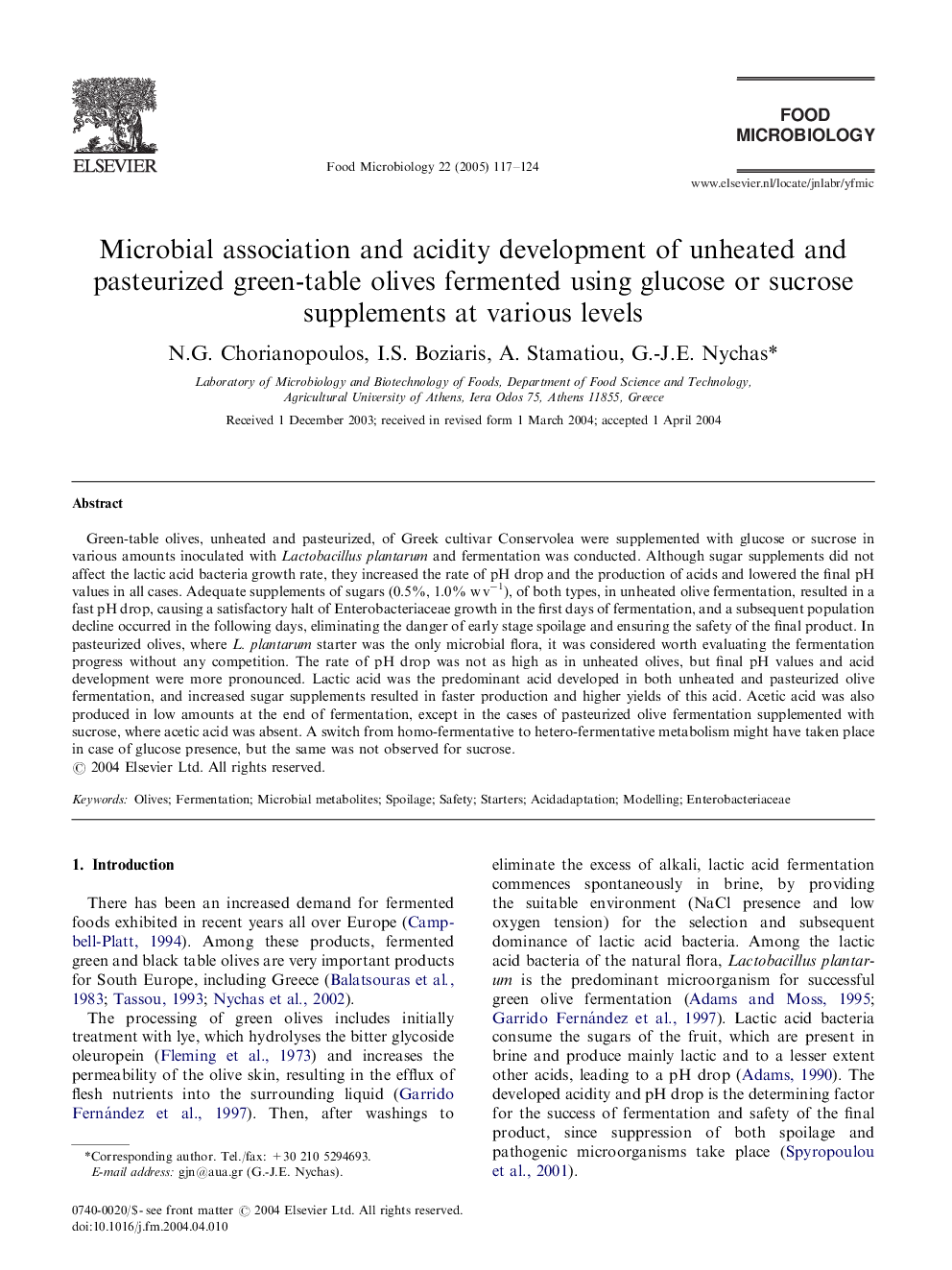| کد مقاله | کد نشریه | سال انتشار | مقاله انگلیسی | نسخه تمام متن |
|---|---|---|---|---|
| 9441735 | 1301567 | 2005 | 8 صفحه PDF | دانلود رایگان |
عنوان انگلیسی مقاله ISI
Microbial association and acidity development of unheated and pasteurized green-table olives fermented using glucose or sucrose supplements at various levels
دانلود مقاله + سفارش ترجمه
دانلود مقاله ISI انگلیسی
رایگان برای ایرانیان
کلمات کلیدی
موضوعات مرتبط
علوم زیستی و بیوفناوری
علوم کشاورزی و بیولوژیک
دانش تغذیه
پیش نمایش صفحه اول مقاله

چکیده انگلیسی
Green-table olives, unheated and pasteurized, of Greek cultivar Conservolea were supplemented with glucose or sucrose in various amounts inoculated with Lactobacillus plantarum and fermentation was conducted. Although sugar supplements did not affect the lactic acid bacteria growth rate, they increased the rate of pH drop and the production of acids and lowered the final pH values in all cases. Adequate supplements of sugars (0.5%, 1.0% w vâ1), of both types, in unheated olive fermentation, resulted in a fast pH drop, causing a satisfactory halt of Enterobacteriaceae growth in the first days of fermentation, and a subsequent population decline occurred in the following days, eliminating the danger of early stage spoilage and ensuring the safety of the final product. In pasteurized olives, where L. plantarum starter was the only microbial flora, it was considered worth evaluating the fermentation progress without any competition. The rate of pH drop was not as high as in unheated olives, but final pH values and acid development were more pronounced. Lactic acid was the predominant acid developed in both unheated and pasteurized olive fermentation, and increased sugar supplements resulted in faster production and higher yields of this acid. Acetic acid was also produced in low amounts at the end of fermentation, except in the cases of pasteurized olive fermentation supplemented with sucrose, where acetic acid was absent. A switch from homo-fermentative to hetero-fermentative metabolism might have taken place in case of glucose presence, but the same was not observed for sucrose.
ناشر
Database: Elsevier - ScienceDirect (ساینس دایرکت)
Journal: Food Microbiology - Volume 22, Issue 1, January 2005, Pages 117-124
Journal: Food Microbiology - Volume 22, Issue 1, January 2005, Pages 117-124
نویسندگان
N.G. Chorianopoulos, I.S. Boziaris, A. Stamatiou, G.-J.E. Nychas,